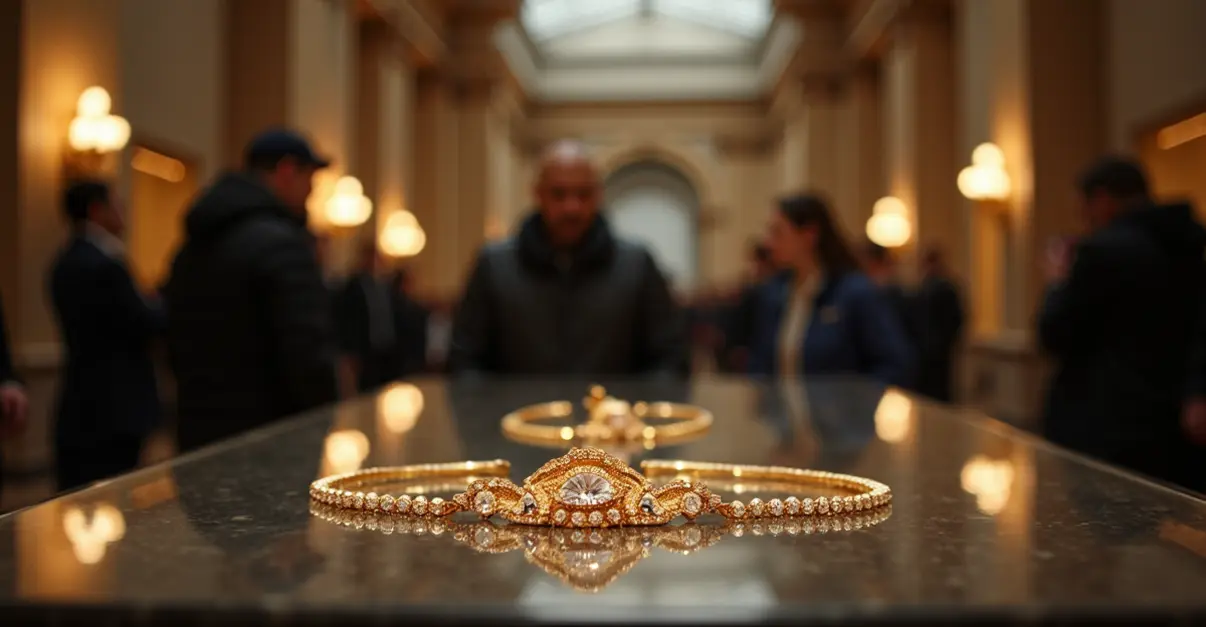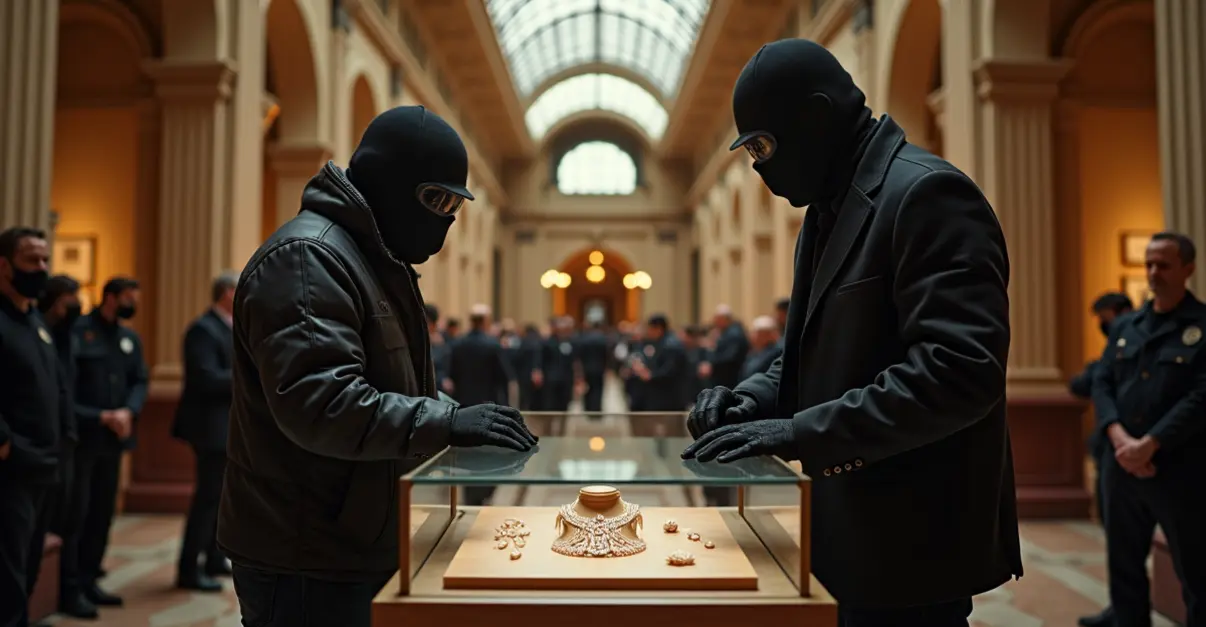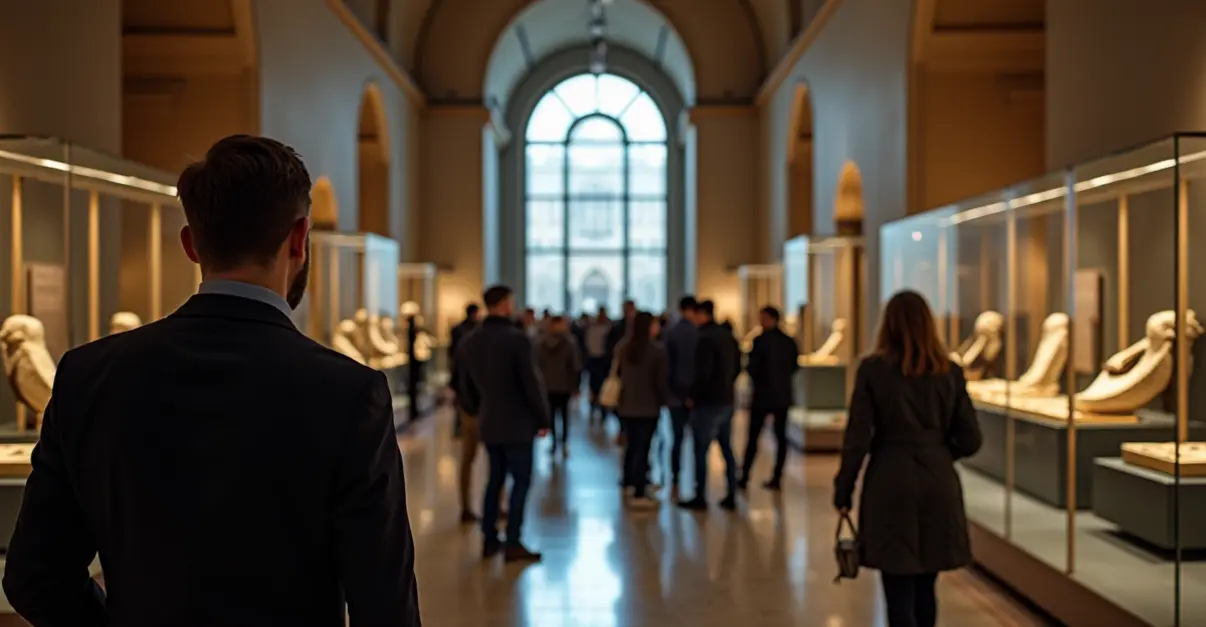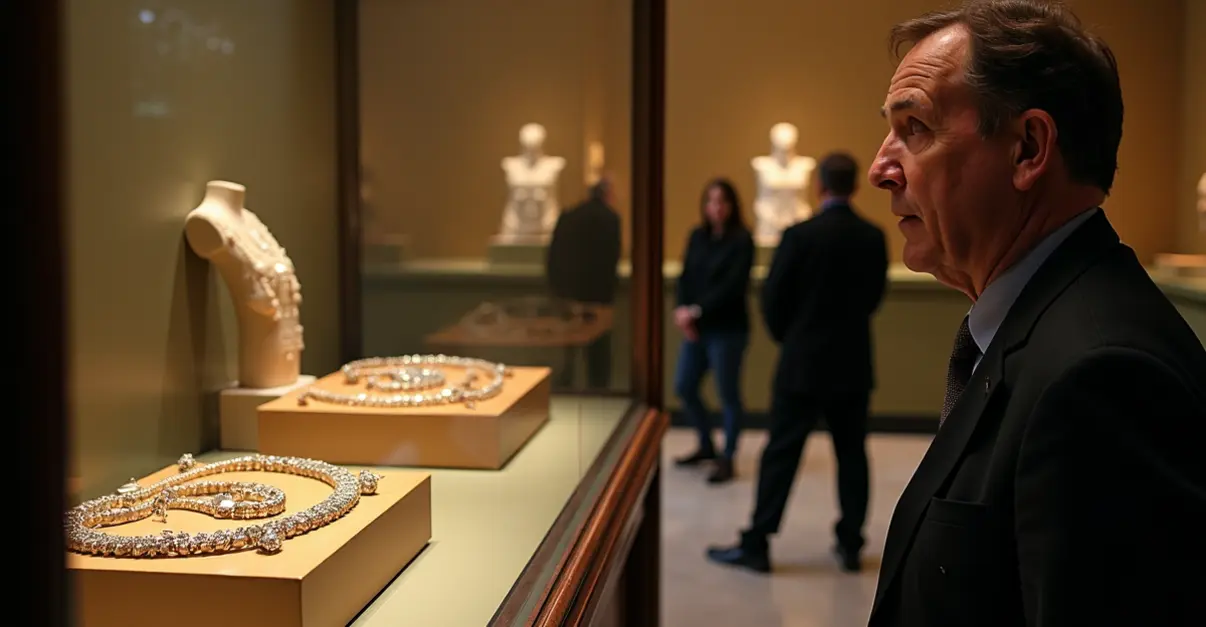Thieves executed a 7-minute heist at Paris's Louvre Museum, stealing priceless crown jewels from Napoleon and Empress collections. The professional operation involved forced entry via basket lift and escape on motorcycles.

Major Jewelry Heist Rocks Paris Louvre Museum
In a brazen early morning robbery that has shocked the art world, thieves executed a sophisticated heist at the Louvre Museum in Paris on Sunday, October 19, 2025, making off with priceless jewels from the French Crown Jewels collection. The professional thieves struck at approximately 9:30 a.m. when the museum was already open to visitors, using a basket lift to access a first-floor window which they forced open to gain entry.
Seven-Minute Operation
The entire operation lasted just seven minutes, according to French authorities. The intruders, believed to number three or four individuals wearing balaclavas, made their way directly to the famous Galerie d'Apollon - the hall housing France's most precious crown jewels. 'This was a major robbery executed with military precision,' French Interior Minister Laurent Nuñez told reporters. 'The perpetrators clearly had detailed knowledge of the museum's layout and security systems.'
Once inside the gallery, the thieves smashed two display cases containing jewelry from the collections of Napoleon Bonaparte and Empress Eugénie. According to initial reports, nine pieces were stolen including a necklace, brooch, and diadem. The famous Regent Diamond - a 140-carat masterpiece - remained untouched in its secure display.
Escape and Discovery
The thieves made their escape on motorcycles, disappearing into Paris traffic before police could respond. However, during their getaway, one of the stolen items was dropped and later recovered by investigators. The damaged piece appears to be the crown of Empress Eugénie, wife of Napoleon III. 'Finding one piece so quickly gives us hope for recovering the others,' a police spokesperson commented.
French Culture Minister Rachida Dati, who visited the museum immediately after the incident, confirmed on social media that no injuries occurred among visitors or staff. 'Our priority is the safety of our visitors and the protection of our cultural heritage,' Dati stated on X.
Historical Significance
The stolen items represent more than just monetary value. As the French Ministry of Interior emphasized, the jewels have 'inestimable heritage and historical value' that transcends their market price. The Galerie d'Apollon contains some of France's most important historical artifacts, including crowns worn by French kings and emperors dating back centuries.
The French Crown Jewels have a tumultuous history, having been largely sold off by the Third Republic in 1885. The surviving pieces displayed in the Louvre represent the remnants of this once-glorious collection, making their theft particularly devastating to France's cultural heritage.
Security Implications
The heist has raised serious questions about security at one of the world's most visited museums. The Louvre attracts approximately 25,000 visitors daily and houses masterpieces including Leonardo da Vinci's Mona Lisa. Despite extensive security measures, the thieves managed to bypass multiple layers of protection.
'This incident demonstrates the constant challenge museums face in balancing public accessibility with security requirements,' noted a security expert familiar with museum protection. 'The perpetrators specifically targeted portable, high-value items that are easier to transport and liquidate.'
The museum remained closed for the day as police conducted forensic examinations and compiled a detailed inventory of the stolen items. Investigators are reviewing surveillance footage and interviewing witnesses who were present during the robbery.
International Context
This heist follows a pattern of sophisticated museum robberies across Europe in recent years, including the 2019 Dresden Green Vault theft in Germany and the 2017 Berlin gold coin robbery. The method of operation - quick entry, targeted theft, and rapid escape - suggests the involvement of organized crime groups specializing in cultural property theft.
As the investigation continues, international art crime units have been alerted to watch for the stolen items appearing on the black market. The unique nature of the stolen crown jewels makes them difficult to sell through legitimate channels, but authorities remain concerned about their potential disassembly for individual gemstones.

 Nederlands
Nederlands
 English
English
 Deutsch
Deutsch
 Français
Français
 Español
Español
 Português
Português










